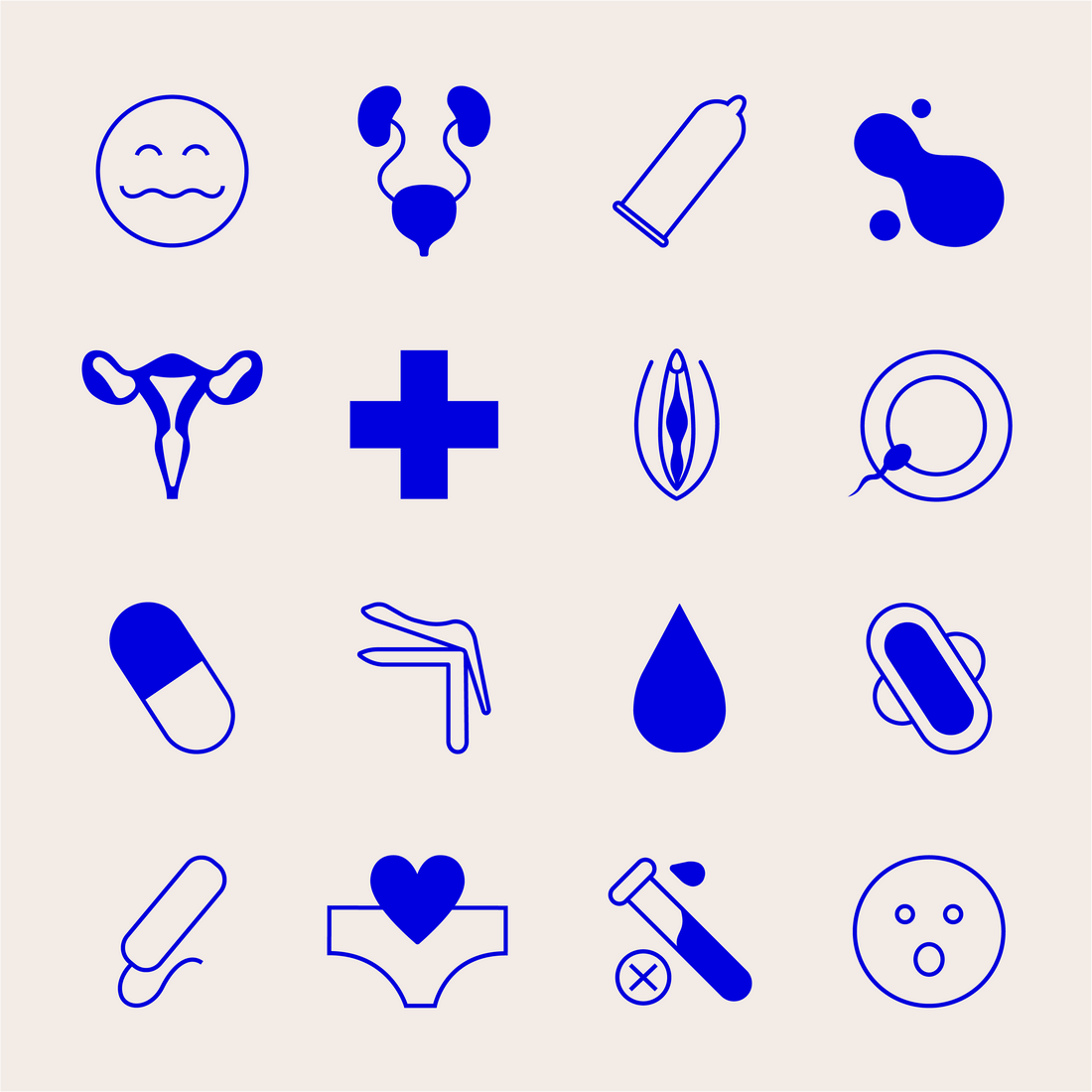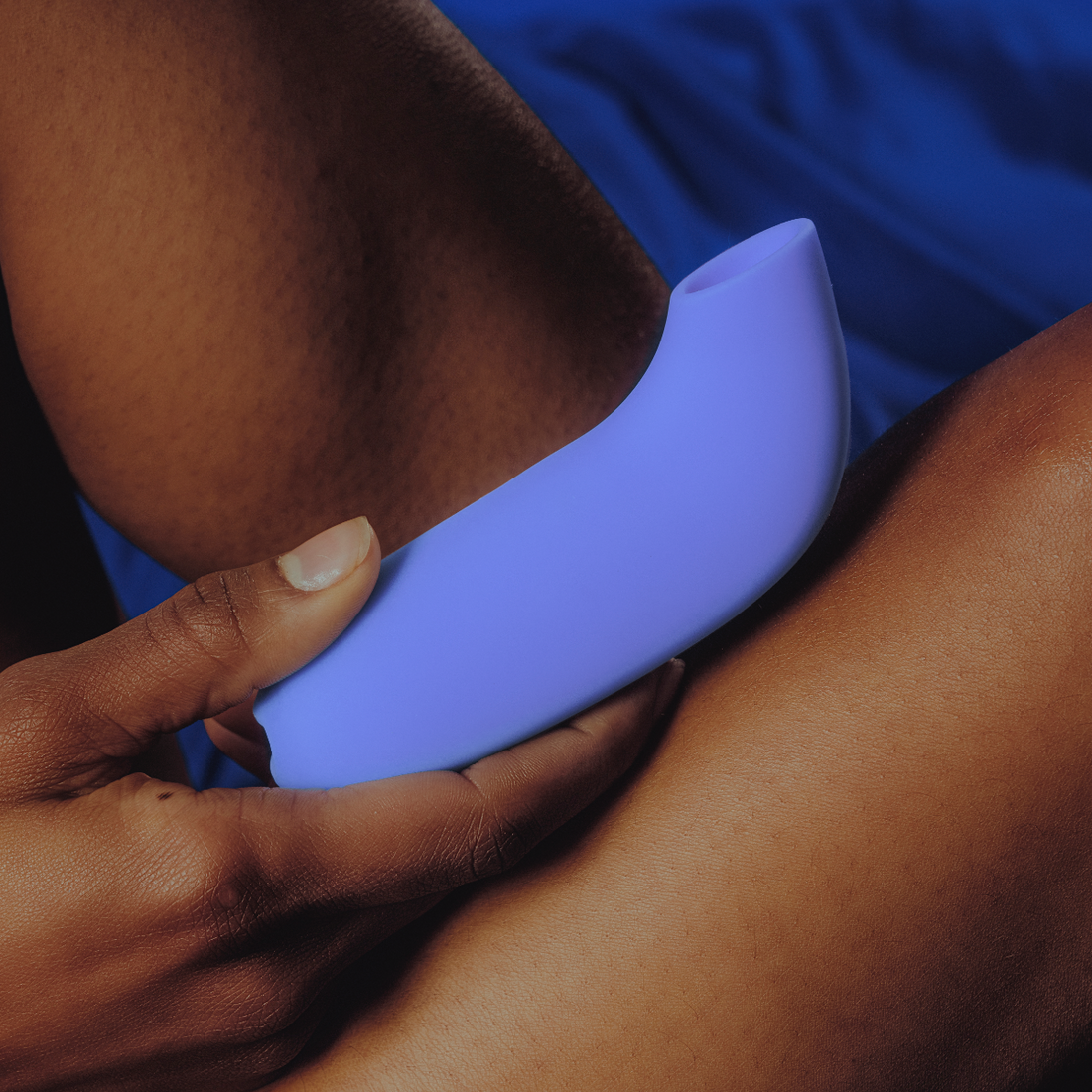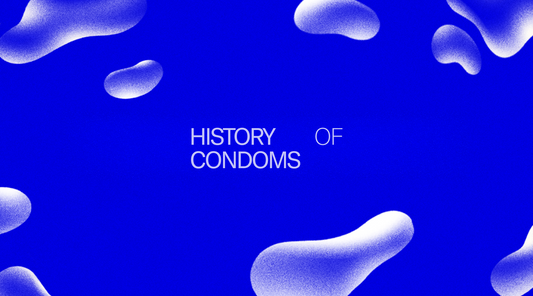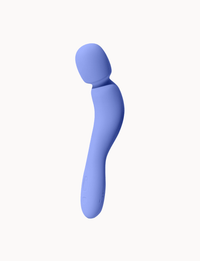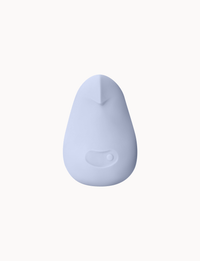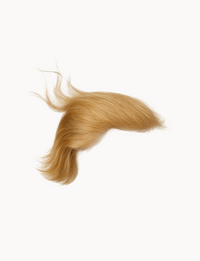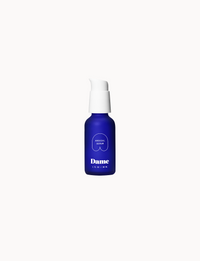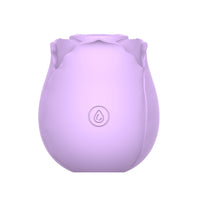Alexandra Fine, Credentialed Sexologist, M. Psych | Written by Dame
The Good News First | Clitoral Masturbation | Vibrators | Vaginal Stimulation | Climaxing During a Sexual Encounter | The Climax
It would be easy to assume from its title that this article was written for teenagers. That’s far from the case.
Those who are in high school (or younger) can and will experiment, the same way we did and our parents and grandparents did before us.
We’re much more concerned with the millions of vulva-havers who’ve never experienced an orgasm.
Millions? Yes, you read that right. Surveys focused on the “female orgasm” continually report that between five and ten percent of those with vulvas have never reached climax. Many who have, say their first orgasm was at a young age. But many others say it didn’t happen until they were in their 40s, 50s or even 60s.
The latest evidence comes in the book The Case of the Female Orgasm: Bias in the Science of Evolution, written by Indiana University biology professor Dr. Elisabeth A. Lloyd,. She analyzed 75 years’ worth of studies, and says that only about 25% of participants reported regularly achieving a vaginal orgasm during penetrative sex without simultaneous clitoral stimulation. And between five and ten percent reported never having climaxed – even though many of them became pregnant.
So yes, there are millions of people who’ve never had a mind-blowing finish to a sexual encounter. Or even a tiny finish.
Those are the folks we’re writing for. After all, everyone deserves to experience their first orgasm, even it doesn’t happen until long after their “first time.”
The Good News First
It’s never too late, even if you’re in the group of middle-aged vulva-havers who have never climaxed and are still waiting for that first experience to occur.
Noted sex therapist Laurie Mintz works with those who are still, as she describes it, “pre-orgasmic.” And she tells Glamour and Cosmopolitan magazines that every client she’s worked with was eventually able to learn how to orgasm. (Except for one whose libido was severely affected by medication she took.)
Sex therapist Vanessa Marin, who also teaches vulva-havers how to reach orgasm, adds that climaxing is a skill that can be learned with enough time, patience and practice. She likens it to learning a new language, saying that someone shouldn’t be upset about lacking fluency if they’ve never taken language classes.
So let’s go to school.
Your First Orgasm 101: Clitoral Masturbation
We’re starting our sex ed class with clitoral masturbation, because it’s a much more reliable way to experience your first orgasm.
There’s absolutely nothing wrong with working with a partner in search of your first climax. Your chances of success are usually better, however, without any extra “moving parts.” That allows you to focus on your arousal, your feelings, your technique and your own pleasure.
One word of caution: the first time you’re able to orgasm, it’s likely to be a very small one. You might not even be sure if “it” really happened. There are two reasons for that: your body is still getting used to a process it’s never gone through, and you haven’t perfected your technique yet. (Perfected may be the wrong word; there’s always room for improvement!) Just remember the “patience” part of the prescription. Things will get better and better.
How to Start
Begin with your fingers instead of a vibrator – it’s that “moving parts” thing again. We’ll get to sex toys shortly.
Use one or two fingers and take a sensory tour of your entire clitoral region. You’re only exploring at this point, not trying to climax.
(Don’t skip this section if you’ve already spent plenty of time trying to reach orgasm with clitoral stimulation. No offense, but if what you’ve done in the past hasn’t worked, there’s no reason not to humor us. Just think of it as one step back, two steps forward.)
Gently touch or rub the clitoral hood (the fold of skin that surrounds and protects the clitoris), the outer and inner labia (what many refer to as the pussy lips), and finally the glans clitoris (the small “pleasure button” most people simply call the clitoris). As you do, focus on the sensitivity of each of area, and the different sensations produced by touching each one.
The reason for this grand tour is simple. Everyone is different, and everyone’s body responds differently to stimulation.
Some vulva-havers’ genitals are so sensitive that they find it uncomfortable, or even painful, to stimulate the glans clitoris. The only clitoral stimulation they can endure for long is indirect play through their underwear or a blanket, or stimulation of the labia or hood. Others find direct clitoral stimulation to be exquisitely pleasurable.
Once you’ve learned where you can “safely” play and where you can’t, and you’ve begun to distinguish the sensations generated by touching or rubbing each area, you’re ready for the more advanced tour.
Experiment with different types of motions and movements. Rubbing, squeezing, tapping, flicking, making gentle circles, contacting both the labia and clitoris with back-and-forth motions – each will feel slightly different. Ideally, some will “tingle” or even excite you more than others.
Feel free to use more fingers or both hands to try stimulating two areas at once, or use one hand to spread or compress the lips while using the other to play with the clitoris. There’s no right or wrong, and there’s no pressure to find an OMG spot or movement that will create a “EUREKA!” moment. You’re still just gathering information, and hopefully starting to feel more comfortable with your genitals.
It’s Time to Try Masturbating
Don’t worry, the exploration you’ve just done will prove to be worth it.
Now that you’ve identified the area (or areas) and motion(s) which seem to create the most pleasure, let’s focus on them. Remember, no pressure; we’re into the “it takes time and practice” chapter of our lesson.
Speaking of time, getting yourself into the right mood before beginning your masturbation-to-orgasm journey will be time well-spent. If you’re into meditation or mindfulness, those breathing exercises and techniques will help you tune out the outside world and live in the moment. If not, close your eyes, take slow, deep breaths, and imagine the pleasure you’re about to enjoy.
(A good mantra for meditation or mindfulness while preparing for your self-pleasuring sessions: “time and patience…time and patience.” It will be a good reminder that you’re on a journey of discovery, not just flipping a switch.)
Now, begin stimulating the area you’ve chosen, using the one or two motions that seemed most promising during your exploration. You might be tempted to alternate between many techniques and target areas, but try not to, at least at first. Moving all around the clitoral area, or switching back-and-forth between many different motions, is likely to stop the build-up to a climax and force you to start all over again.
You should schedule half-an-hour or so of “alone time” for your sessions, so you have enough time to do justice to your masturbation. If you’ve chosen two motions to try, spend a good 3-4 minutes on one, then switch to the other for another 3-4 minutes. When you’ve decided that one technique feels better than the other, stick with it for the rest of the session and experiment with different speeds and pressures.
You may not reach orgasm the first time you try – or the second, or the third. Don’t give up; it may take days or weeks to actually get there. Keep exploring and experimenting. You can try stimulating different areas of the vulva and using different motions or techniques; discard the ones that don’t seem to work, and keep the promising ones in your repertoire.
Once you’re comfortable with digital stimulation, there are other things you can try that might push you over the edge.
Try tensing and releasing different muscles as you play; that may add to the sexual tension and arousal, encouraging an eventual release. Holding your breath during masturbation, for periods of ten seconds or so, may do the same. It can also help to try playing in different positions, since some positions will give you more “access” than others, and stimulation from different angles can provide different sensations. Lube may help, too.
Still no luck? Let’s up your game.
Your First Orgasm 102: Vibrators
Some vulva-havers are simply unable to find the right “digital” combination to unlock their clitoral orgasms. Others may find success using their fingers, but understandably want to increase the power and strength of their climax.
Both groups are likely to find that a vibrator is the golden ticket to more sexual pleasure.
Even if you’ve discovered that your clitoris is too sensitive for direct stimulation, don’t be scared to try a vibe. One of the big advantages to these sex toys is that you can vary the intensity of the vibrations, so the stimulation can be light (or strong) as you’d like. The majority also let you choose different pulses or patterns.
You might want to avoid large vibrators when you’re in search of your first orgasm, particularly the huge ones that look like back massagers. Smaller bullet vibes like the Zee, flexible (and waterproof) ones like the Pom, time-honored classics like the Rabbit, or fingertip vibrators like the Fin are better choices for pinpoint clitoral stimulation. We’ll discuss their big sisters in a little while.
Look for a vibe made from silicone because it’s softer on the skin, easier to clean and hypoallergenic. The only real drawback is that silicone vibrators can’t be used with silicone-based lube. Also be aware that some toys are “rumbly,” some are “fluttery” and others are “buzzy.” That last type can make your clitoris numb pretty quickly, so the first two are usually better for beginners.
Before starting, get yourself warmed up with your fingers and you’ll be ready for the next step. But once again, the key to masturbating with a vibrator is experimentation. Start low and slow, as they say on cooking shows, while searching for the clitoral area that’s most responsive. If it seems like the sensations are too much to take, try pleasuring yourself through your underwear or a towel before giving up.
When you’ve found the right spot(s) and motions and you’re starting to feel excitement built, it’s a good time to play with speeds and patterns. Don’t be impatient; when cis women share their experiences, most report that they climax faster with a vibe than their fingers, but the time they require varies widely.
And just as with manual stimulation, your first orgasm may be a small one. The more experience you get, the longer, stronger and more satisfying your climaxes will be.
(Pro tip: a pulsating shower head can be a great substitute for a clitoral vibrator.)
Your First Orgasm 103: Vaginal Stimulation
First things first.
Orgasming through vaginal stimulation, whether it’s by yourself or with sexual partners, is a lot more difficult than climaxing via clitoral stimulation. Don’t expect too much – but if you’re one of the 25% who can reach orgasm strictly through penetration, you’re in for a treat!
There are very few nerve endings in the vagina, so most who climax this way do it through G-spot stimulation. The G-spot, as you probably know, is real, and is located on the front wall of the vagina (the side closest to the belly button). In most vulva-havers, it’s about one-third to one-half of the way in. Even experts don’t agree on why G-spot stimulation can produce such powerful orgasms, but it’s apparently part of – or linked to – the body’s clitoral network.
But we’re more concerned with the “how” than the “why.” Most vulva owners can find their G-spot with their fingers (it feels rougher than the rest of the wall), but stimulating it is much easier with a long, curved dildo or vibrator designed for the purpose. The Dame Arc is a good choice for that.
The actions and pressures that may produce G-spot orgasms vary from person to person. Stroking or rubbing work for some, stronger pulsations work for others, and some find it difficult (at best) to produce much of a response at all. Just as with clitoral play, though, give it time and experiment. Chances are good that you’ll eventually get there.
(Pro tip: there’s no shame in being one of the many who can only climax with simultaneous clitoral and vaginal stimulation. In fact, that often leads to what’s known as a blended orgasm, which is where you’ll be entering “mind-blowing” territory.)
Your First Orgasm 104: Climaxing During a Sexual Encounter
Now that you’re an advanced student who’s experienced their first orgasm (and hopefully their second…and their third…), you’ll find it much easier to reach orgasm when you’re with a sexual partner.
Being aware of what it takes to put you over the top allows you to show your partner the techniques that work best. That might seem intimidating at first, but don’t let it scare you. Anyone worth having in your sex life will want to know how they can satisfy you.
Your partner will probably be happy to use their fingers or vibrators to make you happy, but orgasms are even better when they’re shared. Mutual masturbation is a good place to start, and oral sex can produce climaxes different (and often even better) than the ones you’ve experienced on your own.
Then, there’s penetration. Even long-time couples with plenty of experience can find it difficult to induce vaginal orgasms, so don’t be impatient or disappointed. It took a while before you were able to have your first orgasm; you certainly can take your time and work together, to find the right positions, angles and motions that will produce a satisfying G-spot orgasm.
And don’t forget simultaneous clitoral stimulation. Even if you’re still not at the point where you find it easy to experience a blended orgasm during penetration, a clitoral orgasm is a fabulous reward for your time and effort.
Next year’s curriculum includes climaxing together, and anal orgasms. But feel free to do some independent study on your own!
Your First Orgasm: The Climax
(Sorry, we couldn’t resist the pun.)
If you’re still unable to reach orgasm, consider the possibility that a physical, wellness or mental issue may be interfering with your pleasure. You may want to consult a doctor or mental health professional to rule out those types of problems. If you’ve simply been unable to figure out the right techniques and approaches on your own, a sexual health therapist can certainly help.
Most of you, however, will have now experienced your first orgasm, with many more to come. Take our word for it – they’ll get better and better.
Sex education is fun, isn’t it?

